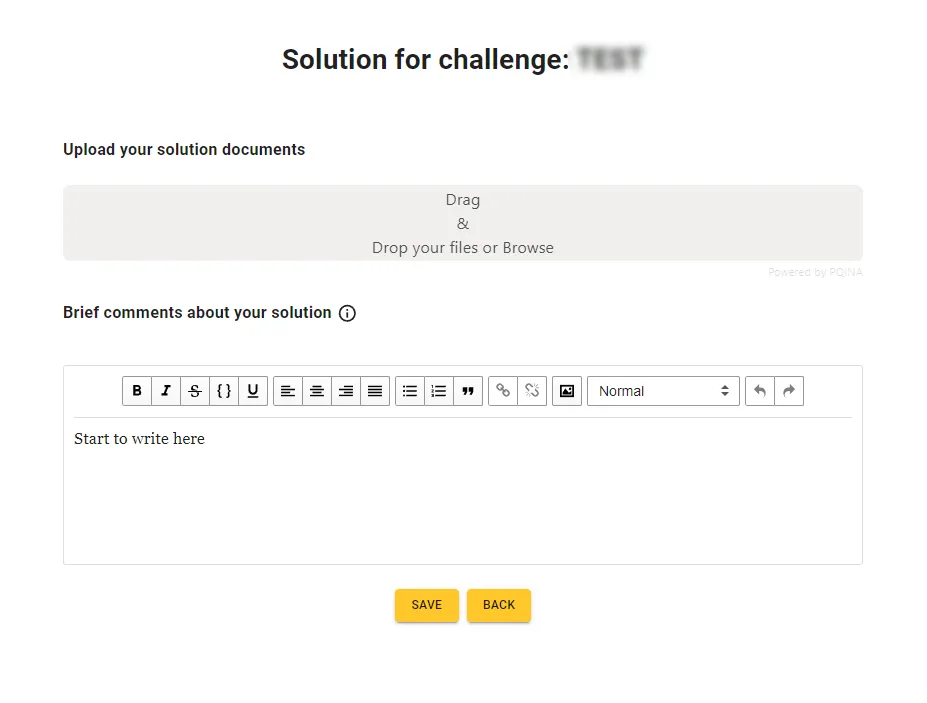Background:
Our client is a leading company in Europe specialized in the transformation of HTV silicone rubber (hot vulcanized elastomer) with more than 50 years of experience. They offer ad-hoc adapted solutions solutions like foundations, additives, ready-to-use silicone mixes and technical products made out of solid silicone and sponge (e.g. tubes, joints, etc.). It works in the automation, aeronautic, train, electric, pharmaceutical and appliances sectors.
The challenge:
Silicone rubber is a material with plastic characteristics, that vulcanizes due to temperature and pressure, turning into an elastic material. The general conditions for the vulcanization of the silicone range from 165 to 200ºC. The vulcanization time is determined by the size and weight of the piece to be vulcanized.
Silicone is injected inside a mould or cavity at a fixed temperature and the vulcanization takes place. As a result, a piece shaped like the mould is obtained. These moulds are usually made of steel. Silicone is a material that, once vulcanized, gets stuck to the mould very easily.
There are currently some additives that can be added to the silicone, like mould release agents that help de-moulding.
The current silicone mix will be used to compare the proposed solutions. These are the components of the standard current mix:
- ELASTOSIL R 420/50: 100 phr
- Crosslinker:
- Dicumyl peroxyde, paste 40% in silicone oil: 1,8phr
- 2,5 Dimethyl-2,5 di(tert butylperoxyl hexane), paste 45% in silicone oil: 1,2 phr
- (Sidenote: only one crosslinker is used at a time, never both of them at the same time)
- Mould Release Agent A: 1 phr
Mechanical Characteristics of the standard mix:
- Hardness (DIN 53505)-Sh A : 50+/-5
- Density (ISO 1183-1A)-g/cc: 1,15+/-0,02
- Tensile Strength (DIN 53504 S1)-N/mm2 : >9
- Elongation at break (DIN 53504-S1)-% : between 500 and 850
- Tear Strength (ASTM 624 B)-N/mm: >30
- Compression Set (DIN ISO 815 B-22h,175ºC)-%:
- Hot air Ageing (7d,200ºC):
-
- Hardness-Sh A: +/-5
- Tensile Strength-N/mm2: >8
- Elongation-%: between 300 and 700
- Tear Strength-N/mm: >20
See attached documents with the technical details, the safety sheets and the composition of the silicone elastomer and additives (crosslinker and mould release agent) that create the currently used standard mix.
What the client is looking for:
The client is looking for a compound that, mixed with silicone, helps de-moulding in the vulcanization process, both in compression and injection moulding processes, while maintaining the mechanical properties of the silicone.
For that purpose, additives need to be incorporated to the silicone. Several different additives have already been tested with different results. There have been good de-moulding results but, in all cases, the mechanical properties of the silicone have been seriously affected.
Commercial additives can be used in the final proposed mix.
If commercial additives are not to be used, the reward will increase by 2000 € if the chemical formulation is also provided.
Evaluation Criteria:
- An improvement in the de-moulding process. Criteria to bear in mind:
- Size of the silicone piece to be de-moulded: smooth sheet of 200x200x 2mms thick
- Vulcanization time: 5 min, 180ºC
- Vulcanization equipment: hydraulic lab press for compression vulcanization
- A silicone sheet added to the mould is attached to a strain gauge. The maximum strength needed to remove the silicone sheet from the mould must not surpass 50% of the standard silicone. In the case of the mould currently used, it cannot surpass 2N, which means that the silicone sheet must be barely stuck to the mould.
- Keeping similar mechanical properties as the silicone’s standard current mix.
- Easy incorporation to silicone.
- Cost
This is a 1-round tournament with the following submissions:
A PDF document including:
- Proposed additive: either commercial additive or a generic chemical formula.
- Expected mechanical characteristics.
- Estimated cost.
Timeline:
This is a 1 round tournament:
1st round – 8 weeks+ 5 weeks for evaluation



